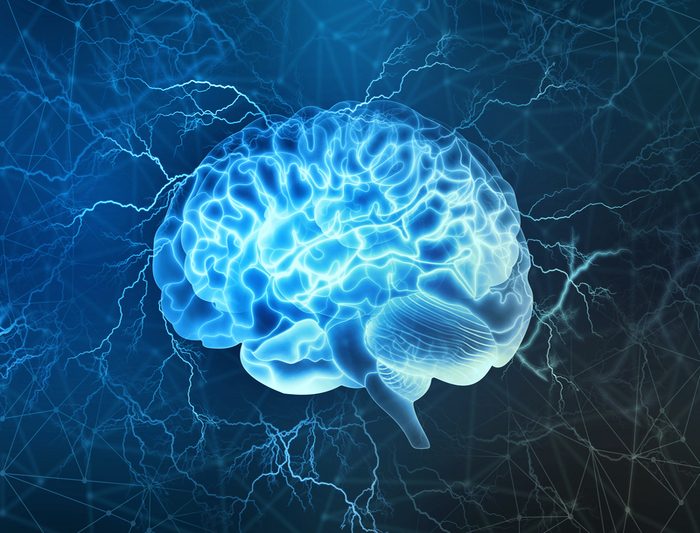- Calls to this hotline are currently being directed to Within Health or Eating Disorder Solutions
- Representatives are standing by 24/7 to help answer your questions
- All calls are confidential and HIPAA compliant
- There is no obligation or cost to call
- Eating Disorder Hope does not receive any commissions or fees dependent upon which provider you select
- Additional treatment providers are located on our directory or samhsa.gov
Binge Drinking & Binge Eating Disorder: What Are the Connections?
A large number of people who struggle with disordered eating behaviors simultaneously struggle with substance use. This is particularly true when it comes to binge eating and drinking.
Research suggests that a combination of shared genetics, impulsivity traits, and desire to escape negative feelings may be behind the high rate of comorbidity, or co-occurrence, of these two conditions.
Still, understanding these factors from a scientific standpoint is much different from living with them. Eating disorders and substance use disorders are both difficult to deal with on their own, and when combined, it may take a sustained, concerted effort to break free from these harmful mindsets.
Still, it is possible to receive treatment for both issues at once, which is generally thought to be the most successful strategy for achieving sustained recovery.
What Is Binging?
One of the biggest factors binge eating disorder (BED) and substance use disorder (SUD) have in common is the concept of binging.
Everyone eats, and many people drink. But binging on these substances is different.
Binging episodes are short and intense, often involving extreme behaviors and frequently characterized by the loss of a sense of control.
This pattern can be seen when it comes to both eating food and drinking alcohol.
Binge Drinking
Binge drinking is the most common form of alcohol use in the United States. While there can be some wiggle-room in describing what this means, it is medically understood as consuming four or more drinks in one occasion for women, and five or more drinks in one occasion for men. [1]
By some estimates, one in six U.S. adults participate in binge drinking, and nearly 25% experience this type of behavior at least weekly. [1] For some people, frequently engaging in this disordered pattern can lead to alcohol addiction or other alcohol use disorders (AUDs). It’s estimated that as many as 14.1 million people 18 and older in the United States alone struggle with AUDs. [2]
Binge Eating
As a medical term, binge eating is more loosely defined. Generally, it describes when someone eats an amount of food that is “definitely larger” than most people would eat in a given time, typically described as two hours.
These episodes are also often characterized by certain traits, including a rapid pace of eating, eating secretly or when alone, and eating beyond the point of feeling full.
Most people who experience these episodes describe going into a “trance-like” state, and the loss of a sense of control is also considered a qualifying characteristic of a binge eating episode.
And while binge eating disorders are among the most recent types of eating disorders to be formally recognized, BED is now largely thought to be the most common eating disorder in the United States. [3]
Common Factors in Binge Eating and Binge Drinking
Binging substances of any type can lead to neurological changes and chemical dependency in the brain. Once these adaptations take place, the connections between what causes the behavior and the behavior itself become murkier and more enmeshed.
Still, there are some common factors that can put someone at a higher risk of experiencing both binge eating disorder and alcohol use disorder.
Genetic Traits
Alcohol dependency and binge eating have both been found to be genetically heritable, meaning the conditions can be passed on and often run in families. That’s because they operate along similar neurological pathways within the brain. [6]
Binging of any type usually impacts and is impacted by the brain’s so-called reward center. This group of neurological pathways are responsible for relaying certain “feel good” chemicals when the body performs certain tasks or receives certain substances.
And certain genetic factors can lead to dysfunction along this pathway, make someone more sensitive to these chemicals, or impact other aspects of their neurological development that put them at a higher risk of participating in binging behaviors or forming a dependency.
Impulse Control
Impulse control refers to someone’s ability to refrain from or stop participating in certain behaviors. Like the propensity to develop addiction, impulse control is also highly influenced by genetics. [7] And a lack of impulse control is another commonly-shared quality in people with disordered drinking and eating habits of all types.
The development of any type of disorder is complex, and reliant upon a number of interlocking factors. But trouble with impulse control may be what leads someone to binge more often or more easily, which can subsequently increase their odds of developing a disorder or addiction.
Impulse control is also likely connected to the lost sense of control or “trance-like” feeling many people describe during binging episodes.
Why Do These Disorders Coexist?
Besides sharing a number of common risk factors, binge eating and alcohol consumption may work to sustain each other in other ways.
Biological Factors
Some studies examining the connection between binge eating and drinking have found binge eating to be the primary driver of binge drinking, while others have found the reverse. [4]
What is known is that alcohol, despite being a calorie-rich substance, can cause a spike in chemical signals in the brain related to intense hunger. [5] This can explain why many people end up at a diner or raiding the fridge after a night of drinking, but it can also serve as a potentially triggering factor for someone who struggles with binge eating behaviors.
Still, other studies, which looked at rats, showed that those who participated in binge eating behavior were more likely to consume alcohol later. [8]
Behavioral/Emotional Connections
While impulse control is frequently a problem for people with both BED and AUD, alcohol can work to further lower inhibitions, leading to more intense or frequent binging episodes.
Many people who struggle with BED are frequent dieters, or attempt to limit their food intake by skipping meals. These people may turn to alcohol consumption to replace meals, though this can lead to weight gain, which might reinforce their disordered thoughts around food and eating.
Shame, depression, anxiety, and low self-esteem are also common among people who struggle with both issues. In many cases, these feelings can be chronic, and serve as drivers of the disordered behaviors involved in each condition.
For example, someone may feel ashamed of how much they drank, and turn to food for comfort, or vice versa.
Finding Treatment for Co-Occurring Disorders
If you’re struggling with binge eating and binge drinking, it’s important to find treatment for both of these conditions.
Unfortunately, this can prove difficult, as many eating disorder treatment centers may screen for people with AUD, while rehab facilities for drinking often don’t include eating disorder-focused therapies.
Still, since one of these issues can support or lead to the other, dealing with both of them is the best way to ensure a sustainable recovery.
If you’re unsure where to look for help, you can talk to your physician, therapist, or other trusted medical professional. They may be able to offer you advice and point you in the direction of programs or practitioners who can help.
If you’re uncomfortable sharing these concerns with others, you can also utilize a number of eating disorder hotlines. These services allow you to remain anonymous, while offering information, resources, and other help for eating disorders and mental health disorders of all types.
Regardless of where you look for help, the most important thing is to start. With treatment and support, it is possible to overcome these unhelpful thoughts and behaviors and start living a healthier, happier life.
References
-
- Binge Drinking. Centers for Disease Control and Prevention. Accessed March 2023.
- Understanding Alcohol Use Disorder. (2021, April). National Institute on Alcohol Abuse and Alcoholism. Accessed August 2022.
- Definition & Facts for Binge Eating Disorder. National Institute of Diabetes and Digestive and Kidney Diseases. Accessed March 2023.
- Escrivá-Martínez T, Herrero R, Molinari G, Rodríguez-Arias M, Verdejo-García A, & Baños RM. (2020). Binge Eating and Binge Drinking: A Two-Way Road? An Integrative Review. Current Pharmaceutical Design; 26(20):2402–2415.
- Cains S, Blomeley C, Kollo M, et al. (2017). Agrp neuron activity is required for alcohol-induced overeating. Nature Communications; 8:14014.
- Munn-Chernoff MA, Duncan AE, Grant JD, Wade TD, Agrawal A, Bucholz KK, Madden PA, Martin NG, & Heath AC. (2013). A twin study of alcohol dependence, binge eating, and compensatory behaviors. Journal of Studies on Alcohol and Drugs; 74(5):664–673.
- Bevilacqua, L., & Goldman, D. (2013). Genetics of impulsive behaviour. Philosophical Transactions of the Royal Society of London. Series B, Biological sciences; 368(1615):20120380.
- Ruiz-Leyva L, Vazquez-Agredos A, Jimenez-Garca A, et al. (2022). From Binge Eating to Binge Drinking: A New and Robust Paradigm for Assessing Binge Ethanol Self-Administration in Male Rats. Addiction Biology; 27(2):e13153.
The opinions and views of our guest contributors are shared to provide a broad perspective of eating disorders. These are not necessarily the views of Eating Disorder Hope, but an effort to offer a discussion of various issues by different concerned individuals. We at Eating Disorder Hope understand that eating disorders result from a combination of environmental and genetic factors. If you or a loved one are suffering from an eating disorder, please know that there is hope for you, and seek immediate professional help.
Last Updated on April 21, 2023. Published on EatingDisorderHope.com


